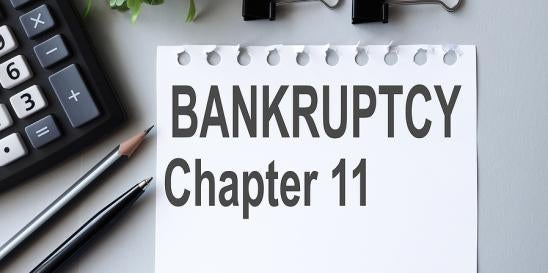In its recent German Pellets decision, the Fifth Circuit held that a creditor could not assert its indemnification defenses in a suit brought by the trustee of a liquidation trust because the Chapter 11 plan’s express language permanently enjoined the defenses and the creditor chose not to participate in the debtor’s bankruptcy despite having actual knowledge of it.
The decision highlights just one of the possible risks creditors and other contract parties expose themselves to when they decide not to participate in a bankruptcy. German Pellets serves as a caution to these parties to prudently consult with bankruptcy counsel when faced with the question of whether to participate in a bankruptcy to avoid unanticipated outcomes.
The Facts and Procedural History
The underlying facts of German Pellets start as a familiar tale. A business, in this case German Pellets Louisiana LLC (“LAP”), ventured on a new project, building a wood processing facility, only to have it fail much sooner than anticipated. This failure resulted in LAP filing for Chapter 11 bankruptcy and LAP eventually confirmed a Chapter 11 plan. Pursuant to its plan, LAP transferred its remaining assets into a liquidating trust that came to be managed by Craig Jalbert.
Jalbert, a year after the trust’s creation, received certain legal claims assigned to him by third party bondholders who lost big in the bankruptcy due to their purchasing of millions of dollars’ worth of bonds. These claims involved alleged misstatements made by the seller of the bonds, Raymond James & Associates (“RJA”), when RJA was helping raise funds for the facility. Notably, RJA chose not to participate in LAP’s bankruptcy but it still “observed the[] Chapter 11 proceedings from afar” even going so far as to “monitor[] the docket” and communicate with LAP’s counsel. Jalbert brought these claims against RJA in Louisiana state court and, in response, RJA asserted affirmative defenses, citing to indemnity agreements it made with LAP pre-bankruptcy.
Countering RJA, Jalbert argued that RJA could not assert its affirmative defenses due to the express language of the Chapter 11 confirmation order, which “permanently enjoined” “all persons who have held . . . a debt, Claim or Interest . . . from . . . asserting any setoff, right of subrogation, surcharge, or recoupment of any kind against any obligation due the Debtors.” Jalbert further argued that the defenses should fail due to the trust being a separate entity from LAP and not subsuming LAP’s liabilities.
Raising these points, Jalbert filed an adversary proceeding in the bankruptcy court and moved for declaratory relief through summary judgment. In opposition to Jalbert’s motion in the adversary proceeding, RJA filed its own summary judgment motion and a motion for relief from the plan confirmation order under FRCP 60(b), arguing that provisions of the confirmation order were inapplicable under these specific circumstances and that the plan was either invalid, inequitable or both. After holding a hearing, the bankruptcy court sided with Jalbert and enforced the confirmation order to preclude RJA from invoking its affirmative defenses based on LAP’s indemnity obligation. RJA appealed the bankruptcy court’s decision to the district court and the district court affirmed in all respects. RJA then appealed to the Fifth Circuit, which similarly affirmed.
The Fifth Circuit’s Decision
In affirming the bankruptcy court’s decision, the Fifth Circuit noted it needed to answer two legal questions: (i) the threshold question of whether the confirmed plan applied to RJA and (ii) if the plan applied, whether the plan discharged the defenses RJA was attempting to assert against Jalbert.
i. Actual Notice of a Bankruptcy Case is Sufficient for a Confirmed Plan to Bind Creditors and Other Contract Parties
As to the first question of whether the confirmed plan applied to RJA, the Fifth Circuit held that it did.
The Fifth Circuit noted, citing to 11 U.S.C. § 523(a)(3), that RJA’s argument that the plan should not apply to RJA due to RJA not receiving notice would normally exempt RJA’s claims from discharge per the general rule “that the debtor has a general obligation to list its creditors when first filing a bankruptcy petition.” The court, however, citing to In re Christopher, 28 F.3d 512, 515, 519 (5thCir. 1994), noted the exception to this general rule, which is that if an interested party has “notice or actual knowledge” of the bankruptcy, the interested party must “come forward and protect their enhanced rights . . . or else lose their rights through the sweeping discharge of Chapter 11.” The court clarified that this Christopher notice requirement is satisfied according to the standard set forth in In re Sam, 894 F.2d 778, 781 (5thCir. 1990), which is that the creditor must have actual knowledge of the case “in time to permit [it] to take steps to protect [its] rights.”
Looking at the Sam standard, the court found that RJA clearly had actual knowledge of the case in time for it to take steps to protect its rights but chose not to do so. The court noted that RJA had actual knowledge because it “monitored the case’s progression from its commencement and even communicated with LAP’s counsel” but never came forward with its indemnity claim. Instead, RJA forewent asserting its rights in LAP’s bankruptcy and failed to object to the plan’s provisions that threatened to extinguish RJA’s rights.
The court further found RJA’s argument that “it never could have known that the bondholders would have assigned their rights to Jalbert” due to its indemnity rights being “defensive and dependent upon the bondholders filing suit” unpersuasive. The court agreed with the bankruptcy court’s observations below that RJA’s indemnity claims “did not spring into existence only when the Bondholders assigned their own claims to the Liquidating Trustee;” “[t]hey arose pre-petition, and any reasonable party . . . should have acted to protect its claims once the Debtors filed for bankruptcy.”
ii. The Terms of a Confirmed Plan Preclude Creditors and Other Contract Parties from Exercising Certain Rights
With the answer of the threshold question being yes, the court next moved to the second question of whether the plan discharged the defenses RJA was attempting to assert against Jalbert. The Fifth Circuit held that the plan did discharge the defenses.
The court emphasized that the plan’s terms permanently enjoined “all persons who have held, currently hold or may hold a debt” from “asserting any setoff, right of subrogation, surcharge, or recoupment of any kind against any obligation due the Debtors, the Reorganized Debtors, the Purchaser, their successors, heirs, executors, administrators, or assigns or their respective properties.” It found that RJA’s defenses were an attempt at recoupment and setoff and that the plan’s express language precluded such claims. The court further noted that similar preclusion language in plans has been supported by several bankruptcy courts.
Next, the court addressed RJA’s arguments that nothing in § 1127 expressly prohibits a party from seeking relief from a confirmation order under FRCP 60(b) and that the plan’s language should be invalid “based on a litany of theories rooted in the bankruptcy code.”
FRCP 60(b), the court noted, allows a court to relieve a party or its legal representative from a final judgment order or proceeding in certain situations or for any “reason that justifies relief.” The court found that the bankruptcy court did not abuse its discretion in holding RJA could not get relief from the plan under 60(b) due to the creditor being “fully aware of the bankruptcy case but fail[ing] to participate.”
As for RJA’s arguments on the plan language being invalid, the court noted that addressing RJA’s various arguments rooted in the Code would be futile because even if RJA could show the terms of the confirmed plan were invalid, RJA still asserted its defenses against the trust. The court explained that the trust was not the appropriate party for RJA to raise its defenses against because the defense only existed vis-à-vis LAP.
The court also dismissed RJA’s argument that LAP’s indemnity obligations and the sales of the bonds were part of the same transaction for purposes of recoupment by pointing to the express language of the agreement that created Jalbert’s post-confirmation trust, which stated that the “Liquidating Trust shall have a separate existence from the Debtors” and thus it was not to be a “successor-in-interest of the Debtors for any purpose” except as provided in the plan. The court also cited to In re United Operating, LLC, 540 F.3d 351, 356 (5th Cir. 2008), to emphasize that the Fifth Circuit treats post-confirmation entities as distinct from the debtor’s estate.
Last, the court addressed RJA’s argument that application of both the express language forming the trust and United Operating produces a fundamentally unfair outcome sought to be prevented by the United States Supreme Court’s decision in Caplin v. Marine Midland Grace Trust Co. of New York, 406 U.S. 416 (1972). The court readily distinguished RJA’s situation from the situation in Caplin, citing to Grede v. Bank of N.Y. Mellon, 598 F. 3d 899, 901-02, 903 (7th Cir. 2010) for the proposition that “Caplin does not apply to the activities of a liquidating trust created by a plan of reorganization” and noting that none of the concerns the Court was worried about in Caplin were present in this case.
Conclusion and Takeaways
German Pellets is a cautionary tale for creditors and other contract parties about what can happen if you sit on the sidelines of a bankruptcy.
These parties need to be aware of the Fifth Circuit’s standard for “notice or actual knowledge,” which this opinion suggests is not too difficult to satisfy. The court here concluded that since RJA was a sophisticated party and was aware of the bankruptcy, it should have participated in the case to protect its interests. The court showed little sympathy towards RJA’s argument that its situation was unique and thus merited an equitable remedy.
These parties also should be aware that though they think their interests may be unaffected by a bankruptcy, there are many ways their interests can end up being harmed, such as how RJA’s were here by third party assignment of claims to a trustee a year after the trust was formed.
All in all, German Pellets cautions creditors and other contract parties of the dangers of not participating in a bankruptcy. There may be times when sitting out a bankruptcy may be a proper strategy, but in any case, it is prudent to consult bankruptcy counsel to understand the risks of such a strategy and possible alternatives to avoid potentially ending up with millions of dollars of exposure like RJA.





 i
i


